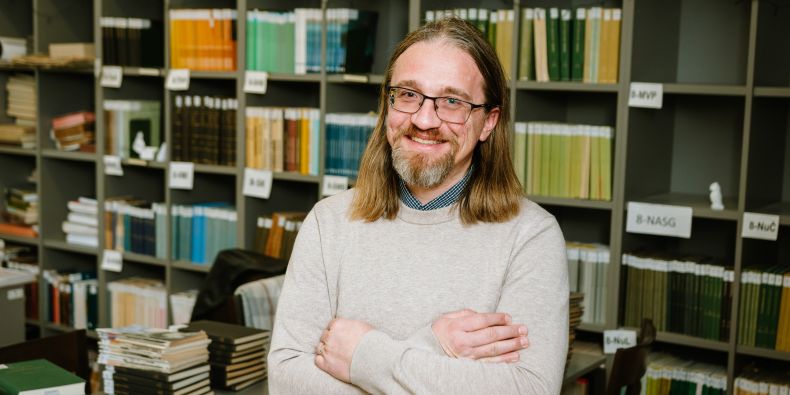Experts from the Faculty of Arts received a prestigious grant for their innovative approach to the history of Mojmirid Moravia, which combines traditional research with new archaeological discoveries. In their project, they want to focus on questions of how the regions on the edges of the empire became part of it in the 9th century. They will compare the early Moravian polity with similar areas of the Carolingian Empire to understand how it influenced the stabilisation of these regions and their elites.
The Carolingian Empire was at its biggest in the 9th century under Charlemagne, covering almost a million square kilometres and including what is now France, western Germany, the Benelux countries, Switzerland, northern Italy, as well as Catalonia and the Basque Country. It also included parts of modern-day Austria and Hungary.
“The empire was next to Mojmirid Moravia. Mojmir and the Moravians were baptised by Bavarians, were controlled by the bishop of Passau, paid tributes to the Empire and traded with each other. But there were also military conflicts. While there have been many descriptions of the relationship between Moravia and the Carolingian Empire, these descriptions have not always looked at how the Carolingians interacted with and struggled with other areas on the borders of their empire.”
Some historians have already compared the regions on the edge of the Carolingian Empire, but in the case of Mojmirid Moravia they have tended to pay attention only to the eastern borderlands. “We would like to look at all the half-independent territories on the edge of the empire, including those in the west and south, such as Brittany and Catalonia, and also those territories that were absorbed by the empire, such as Bavaria, or Saxony,” David Kalhous said.
The project will look at how conflicts were resolved, the role of taxes and how social status was established. It will also look at how the early Middle Ages were viewed in later periods. Kalhous says that this will help to show the ways in which empires and their local allies or opponents in the outlying areas used similar trends and strategies, as well as to identify local differences.
He will work on the project with Michal Hlavica, who is the second principal investigator, and his colleagues at the Institute of Archaeology of the Czech Academy of Sciences in Brno, who will focus on researching the production and distribution networks, including the major central sites and rural settlements of Mojmirid Moravia. “Usually, archaeological research looks at specific artefacts or sites in detail, but we want to understand the relationships between sites or products more thoroughly by studying the transfer of raw materials and former commodities," says the historian, adding that this approach will help clarify socio-economic networks in emerging states and the importance of imperial neighbourhood in catalysing them.
Kalhous says that there is not much work comparing different things in history because history is still a strongly local subject, with experts often working within their own country. He says that these national ways of thinking rarely cross over or are unaware of each other. “This is partly because of the language barrier, where Western scholars usually don't know the local literature very well, even if they have an overview of it.”
His project aims to overcome national and linguistic barriers. To this end, he will also work with colleagues from abroad and has already included a PhD student in the research. He thinks that the student will provide a new perspective on the phenomenon of Mojmirid Moravia and the whole issue of relations between peripheries and empires.
“We want to create new models for how these areas were organised, and our approach will allow us to test the widely debated impact of empires on these processes. By looking at these areas in a local and comparative way, we can better understand how less developed areas are integrated into larger societies and how local power hierarchies are formed.”
As well as publishing in prestigious journals and book series abroad, he also wants to put the results of his research on a website that will collect and show the data.
